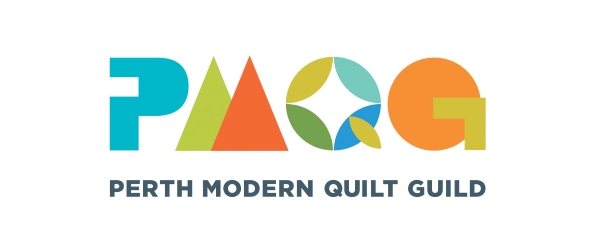Welcome to the next installment in our Block of the Month series. This time we’re being frugal and using up long thin scraps and selvedges (or selvages if you prefer that spelling – trust me, they are both valid).
I have a bit of a thing about hoarding collecting offcuts of fabric. I’ve seen so many great pictures of projects using little pieces that I just can’t bear to throw them out. I’ve explored a few ways of using them up, and the string block is one of my favourites.
I recently asked my friends in the Quilt Club Australia Bee # 4 to make selvedge blocks for me using Jodi Nelson’s tutorial at the Pleasant Home blog: http://www.pleasant-home.com/2010/11/scrappy-2010-quilt-top-in-progress.html. Thanks Jodi for letting me use your tutorial. This is what I made with the great blocks they sent me:
Since I love it so much, I picked a similar block from the Modern Blocks book for this month’s charity quilt adventure. The differences between the two techniques are the foundation – in this case we use a white quilting fabric foundation (cut 6.5″), which appears as the central white stripe through each block – and the method of stitching the selvedges (I’ll cover that at the end).
Here’s the process:
1. Start with piles of selvedges and skinny strings. The pieces are best when between 1.5″-3.5″wide and up to about 12″ long.
2. Cut 4 squares of the foundation fabric (6.5″)
3. In the book, the quilter rules a line through the middle of the block, then rules seam guides either side of that. I didn’t want to remove a line later, so skipped the first one and just ruled 2 parallel lines starting 3/4″ from the corner.
4. Place the first string face down on the foundation, with the raw edge against one of the the lines. Your string will sit over the middle of the square, and there will be a lot of white space on the right of it. Stitch a regular seam. The precise width of the seam isn’t important, but 1/4″ works well.
5. Press the seam open, then repeat with more strings until the block is finished.
6. You might find at the corners that it’s better to use a chunky piece than a string. It gives a better finish.
7. This is how finished blocks might look on the back …
… and the front
… and then neatened up
Notes about working with selvedges:
Obviously, one edge of a selvedge is woven. What this means is that:
- You can leave it exposed and it wont fray, which is handy if you have a really pretty selvedge and don’t want to lose 1/4″ of it in a seam. In this case, tuck the raw edge of the other piece underneath, lie the selvedge piece on top, and topstitch.
- The quilt will be heavier and stiffer than a regular quilt because there are so many pieces and seams.
- The quilt may not wash and wear as well as other quilts because the woven selvedge will not shrink like the rest of the fabric. This doesn’t worry me, and I hope it doesn’t worry you either.










